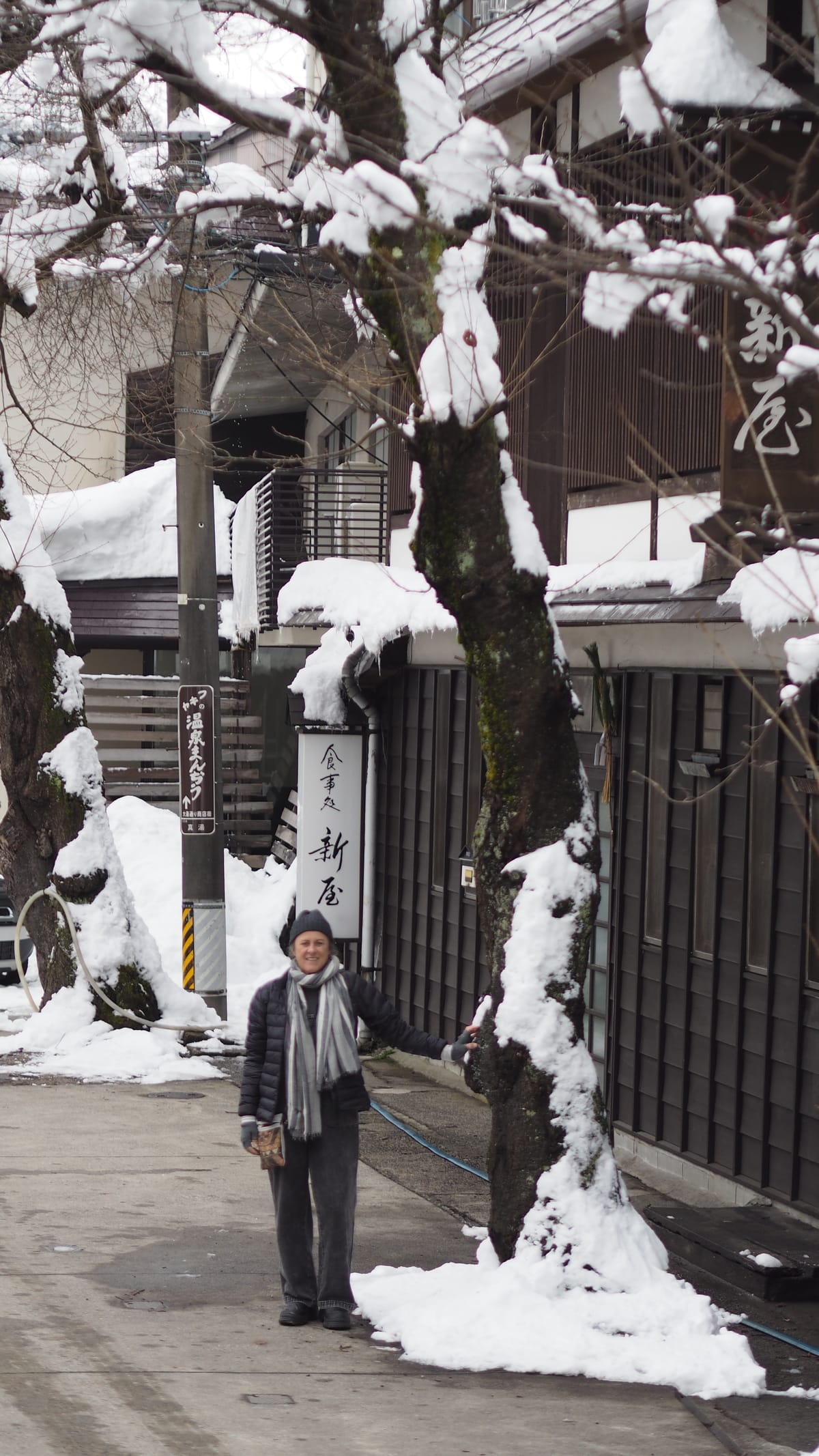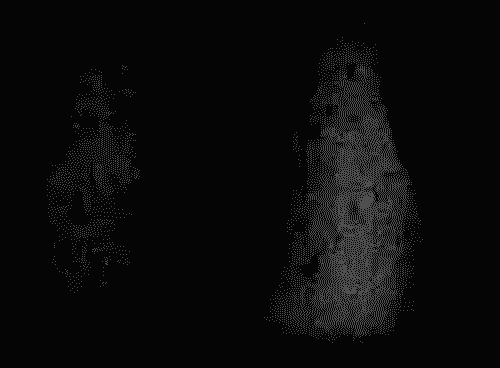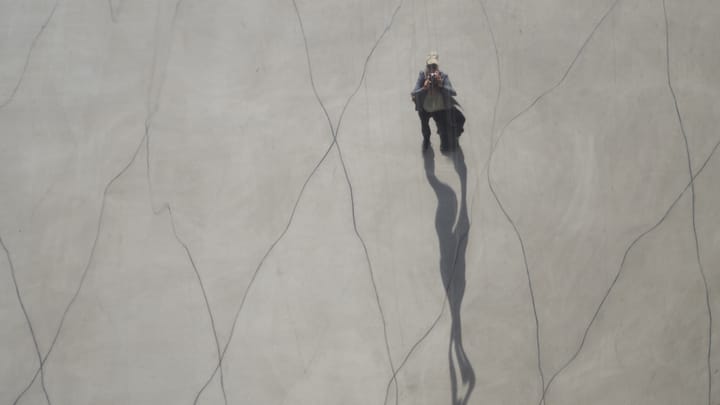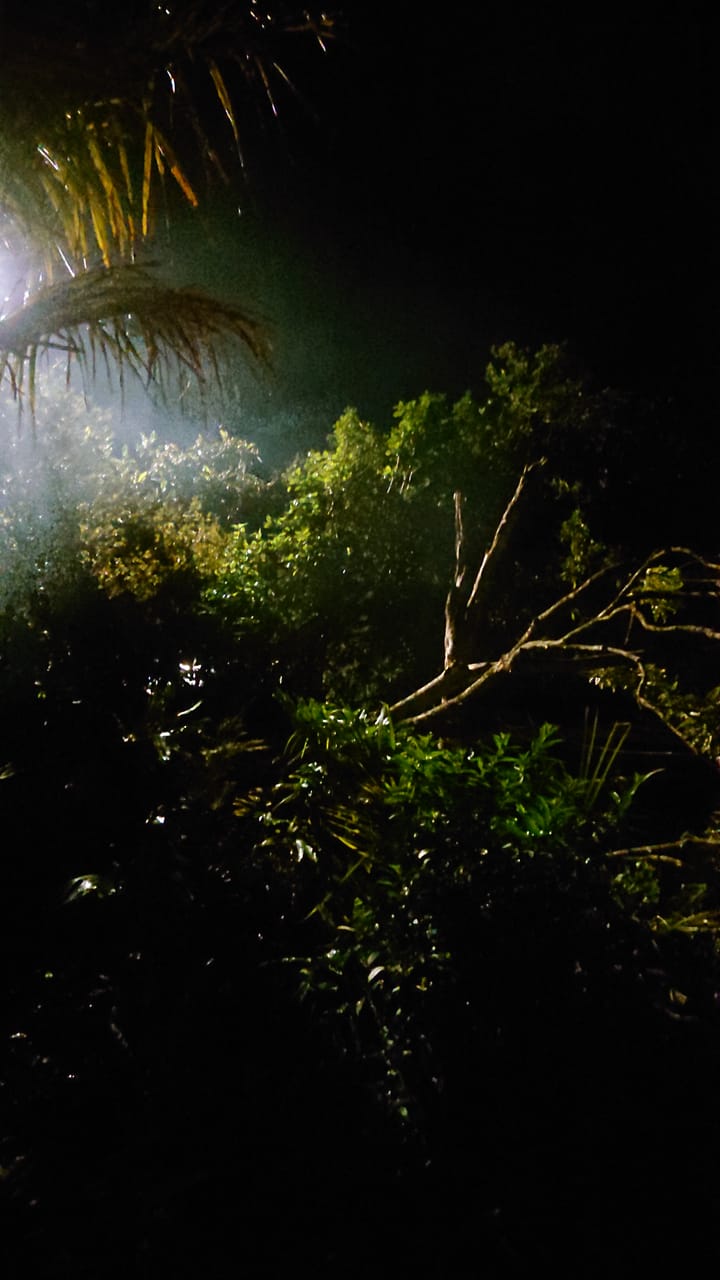a tree imagines it's a tree

What was yesterday fanciful today seems obvious. The tree imagines it's a tree. It doesn't only imagine it but is in . . . I would say 'process,' the process of becoming a tree, but that processes have durations, even when they are open processes, which are not the tree's. And processes are generalisable that can be abstracted from the tree, applied to other trees. This tree's imagination is categorically only its.
The tree doesn't only imagine it's a tree—as you might say, Well, that's just your perception! No. The tree and the image it has as it grows of the tree it imagines are not matters of my perception, but its—like the tree's imagination. In fact they are products of perception.
The tree forms its body based on the earth, of course, and all the external elements it perceives. This is an arboreal perception, yet inasmuch as it cannot be said there is an arboreal essence, a tree-ness, at work, and, equally not a process of becoming tree, the perception is outside the tree. Where? In the externality of the elements it perceives. Yet there is an it, a subject of perception, who perceives, which implies choice.
To be able to imagine itself, a tree steps outside itself, into perception. Perception responds as much to the virtual image the tree forms, the virtual form a tree imagines, as it responds to and is, in its multiplicity, a response to, the questions constantly raised by the outside. The questions it asks itself are from the viewpoint of the virtual form it holds in imagination. Because of changing external conditions, variations in the flows of nutrients, the water and air, the climate it needs, the virtual form is never final. So, it has to use its imagination.
Perception belongs to the actual form; imagination corresponds to the virtual, which I contend is a reflection in time. The tree's imagined form, the image produced by its perceptions, is not as in a mirror, in space, but flares up when the need requires. There is then more constancy and consistency in the actual tree and the tree a tree imagines is discontinuous in its form—a form in variation.
Genetic perception is one thing, creative perception another. In other words, the need for a tree to vary arises due to threat, problems of sustaining itself and survival. For it to, it goes back, as it were, to the drawing board, from which it draws new patterns of growth, and, altering its morphology, often quite obviously, in wind-swept trees, then less, in the case of genetic mutation, adapts to the external conditions. It seems, in some cases of mutation that it is more sudden and takes less time than the slow accommodations of the body to long-term climatic and environmental affects. This is due to pre-existing latencies which are perceived, like those latencies in physical materials, for example of certain metals which having received a form at a particular temperature can, from other forms, return to that one when the temperature recurs. So a designer will discuss with an engineer what the materials can do, what new use they might be put to, and what perhaps they might do when applied to a particular problem. We can take from this that the perception producing the imagination is creative.
I put some of these theoretical understandings to ChatGPT 5—Artificial Imagination, Quantised Governmentality and the Societies of Automated Control—which took up the thread of governmentality from my arguments over a series of engagements, culminating in Living in the Time of Artificial Intelligence. And asked how AI and HI contrast, ChatGPT 5 referred back to notions of openness and closure, when the decisive factor in the contrast between living systems and nonliving—although, always perilous to make this distinction—is that a tree can revise what is assumed to be its deepest, the one it uses to reproduce, genetic template. In discussion, the engineer points to something the designer missed, the presence of a gene offering variability, to produce the mutation propelling a tree's adaptation and survival. (The exchange with ChatGPT 5 is recorded in this resource which led to the post "We are allowing the proliferation of a technology which will not destroy humanity but will destroy its thought.")
Mutation occurs at the cellular level and carries on to the morphological. Whether morphological variation, that by which we distinguish one tree from another, carries on to the cellular remains an issue for discussion. It is nowhere better discussed than in Nicholas Mosley's Hopeful Monsters, 1990, final volume of a series called Catastrophe Practice. Time is of the essence here. So, the question of choice—
Choice exists but can you choose what your body has chosen for you? It has a destiny that tragically only becomes clear at the moment of death, so it is said. At that moment presumably your unity with it reaches completion. We can easily see how from this it might be thought it reaches completion only for you to be severed from it and released; and we can easily see that if there were to be a resurrection it would restore the severed unity. You would come back in your body.
This is how the agency of perception works, in this case, what we might call natural perception. Your body perceives without a you. And it imagines itself human.
We give so much weight to thought we think it belongs to the body too, that natural perception would be a way of thinking, an embodied way, when the thought we are giving weight to contains formally associations rather than perceptions. It connects this with that by knowing this and that connect. This knowledge is however as little a matter of possession as the body, yours or the tree's.
As a body of knowledge it too imagines itself and is the product of perception. Into your knowledge you know have crept bodily associations. To be objective means rooting them out, but these associations as easily might be matters it perceives, its hungers, desires and affects. Somehow its insides have become your outsides. You fear you may be imagining them, that they are dreams, and you are right. They organise themselves into a body of knowledge just as well as anything. And when you bring the scalpel of your perception close to them they burst apart, sending seeds of meaning, spores and signs, everywhere.
The question whose perception is it needs to be replaced with the question what perception, or perception in what attribute? When dealing with what we know we are either dealing with associations or perceptions. Once a body of knowledge, like dreams, like those of science, is organised, the question is what to do with it. Into what outsides has it already entered?
The terms enter onto something like a stage, where there is a theatrical perception. Like your scalpel, imagination comes into play. The terms of association, well or badly integrated into a body of knowledge which dreams itself, will be seen to have only been useful so as to look into the mirror of a virtual form. And here we can align virtuality with vitality. The tree's vitality, the perception that its life is, finds its image in the virtual form of its imagination.
For choice to exist, for a tree first to perceive, embody or actualise that perception, and imagine it is a tree—its virtual image or form—there is however separation, a severance. It's not between inside and outside, cellular levels or morphological and topological ones. It comes to pass in space but does not belong to space since properly thought it is an interval and belongs to duration. It occurs in the space that time imagines.


